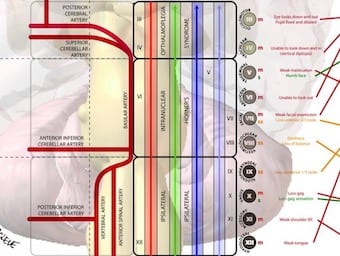
Beta-Blockers for Cocaine and other Stimulant Toxicity
The toxico-mythology of 'unopposed alpha stimulation' and the contra-indication of beta-blockers in the treatment of cocaine, amphetamine and other stimulant toxicity. Down with dogma!

The toxico-mythology of 'unopposed alpha stimulation' and the contra-indication of beta-blockers in the treatment of cocaine, amphetamine and other stimulant toxicity. Down with dogma!

Silas Weir Mitchell (1829-1914) was an American physician and writer. Best known for his discovery of causalgia (complex regional pain syndrome type II or CRPS II) and erythromelalgia.

John Madison Taylor (1855-1931) was an American pediatric neurologist. He designed the first tendon reflex hammer in 1888

François Gigot de La Peyronie (1678-1747) was a French surgeon. Eponym: Peyronie disease in 1743

The neurological examination in 3 minutes, on video - the highest form of art?

Helpful Brainstem Figures. Cross-sections of the brainstem. Medial brainstem syndromes and lateral brainstem syndromes

Biography Born 2 February 1833, Ronsdorf Died 24 November 1901, Tübingen Medical Eponyms Liebermeister rule: Defining the relationship between pulse frequency and body temperature in fever. In fever, when the body temperature increases by one degree centigrade, the pulse frequency…

Faget Sign: Relative bradycardia in association with fever (Temperature-pulse dissociation). Originally described by Jean-Charles Faget in patients with yellow fever (1859)

Liebermeister rule: Defining the relationship between pulse frequency and body temperature in fever. Carl von Liebermeister (1833 - 1901)

Jean-Charles Faget (1818 - 1884) was a French physician. Faget reported an exception to the Liebermeister rule in his description of yellow fever [Faget sign] in 1858

Peter Gates rule of 4 of the brainstem illustrated in a single diagram...why and how?

Gates described a simplified method for answering the question 'Where is the lesion?' using only the parts of the brainstem that we actually examine during a clinical examination to understand brainstem vascular syndromes.